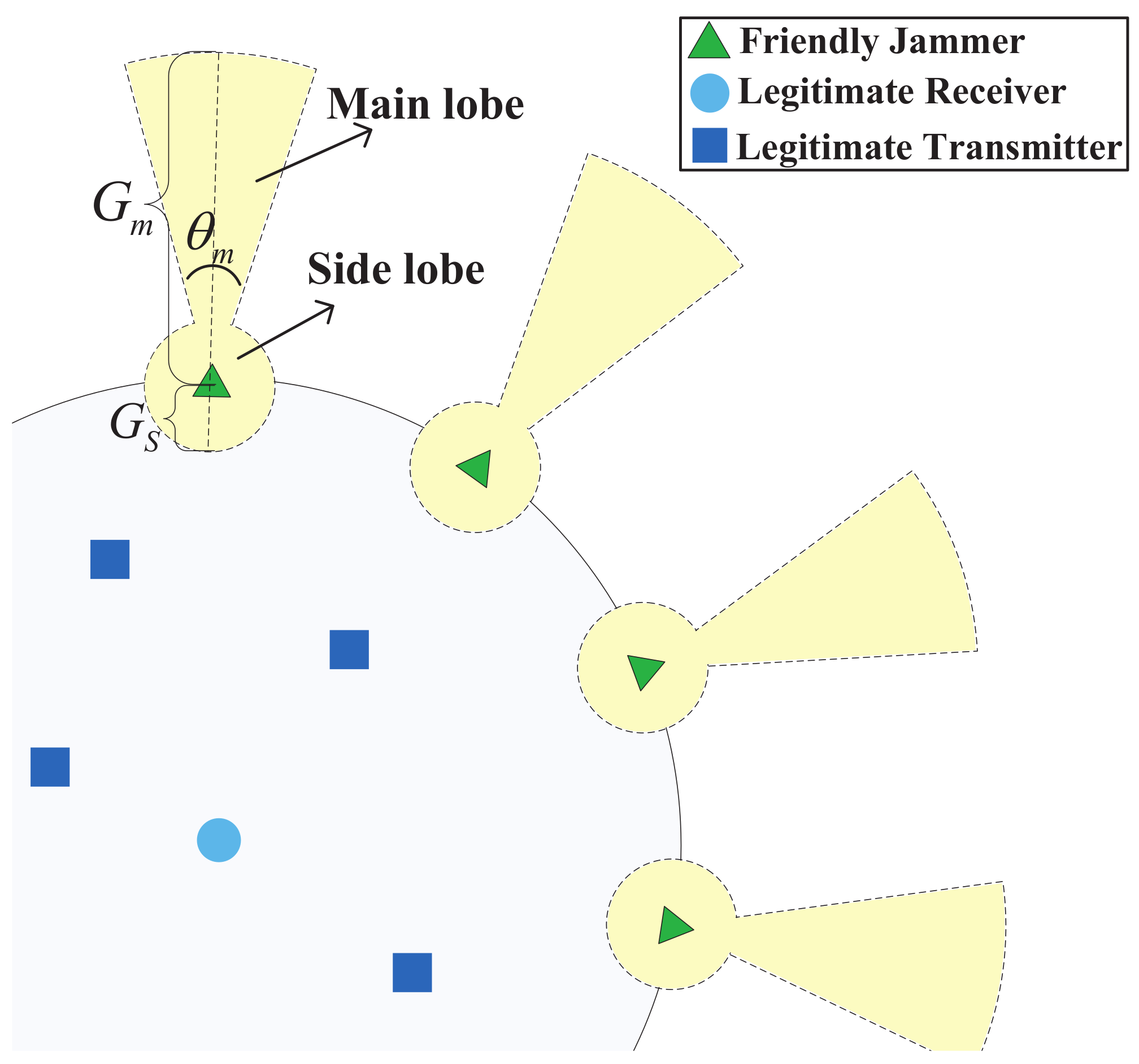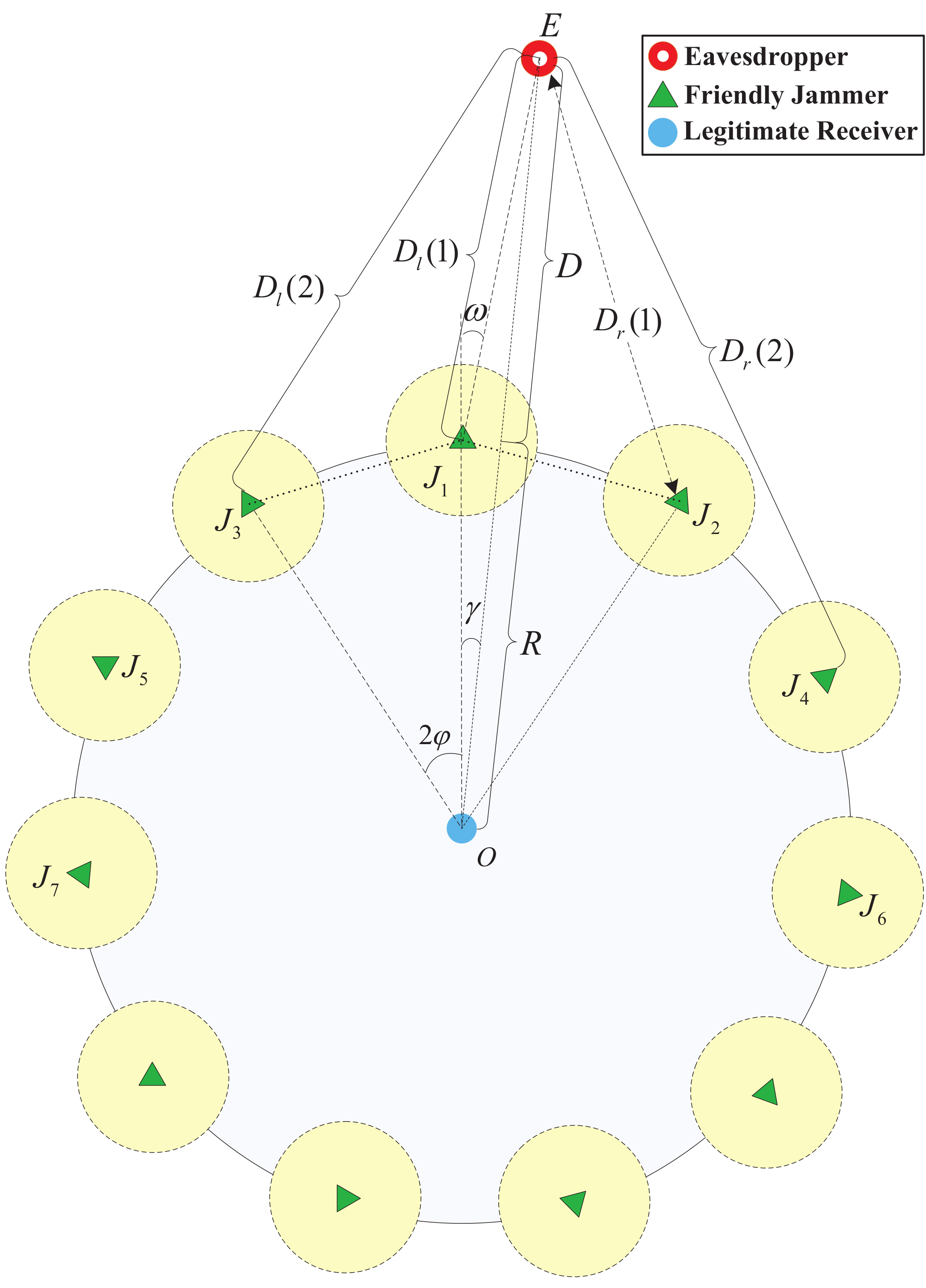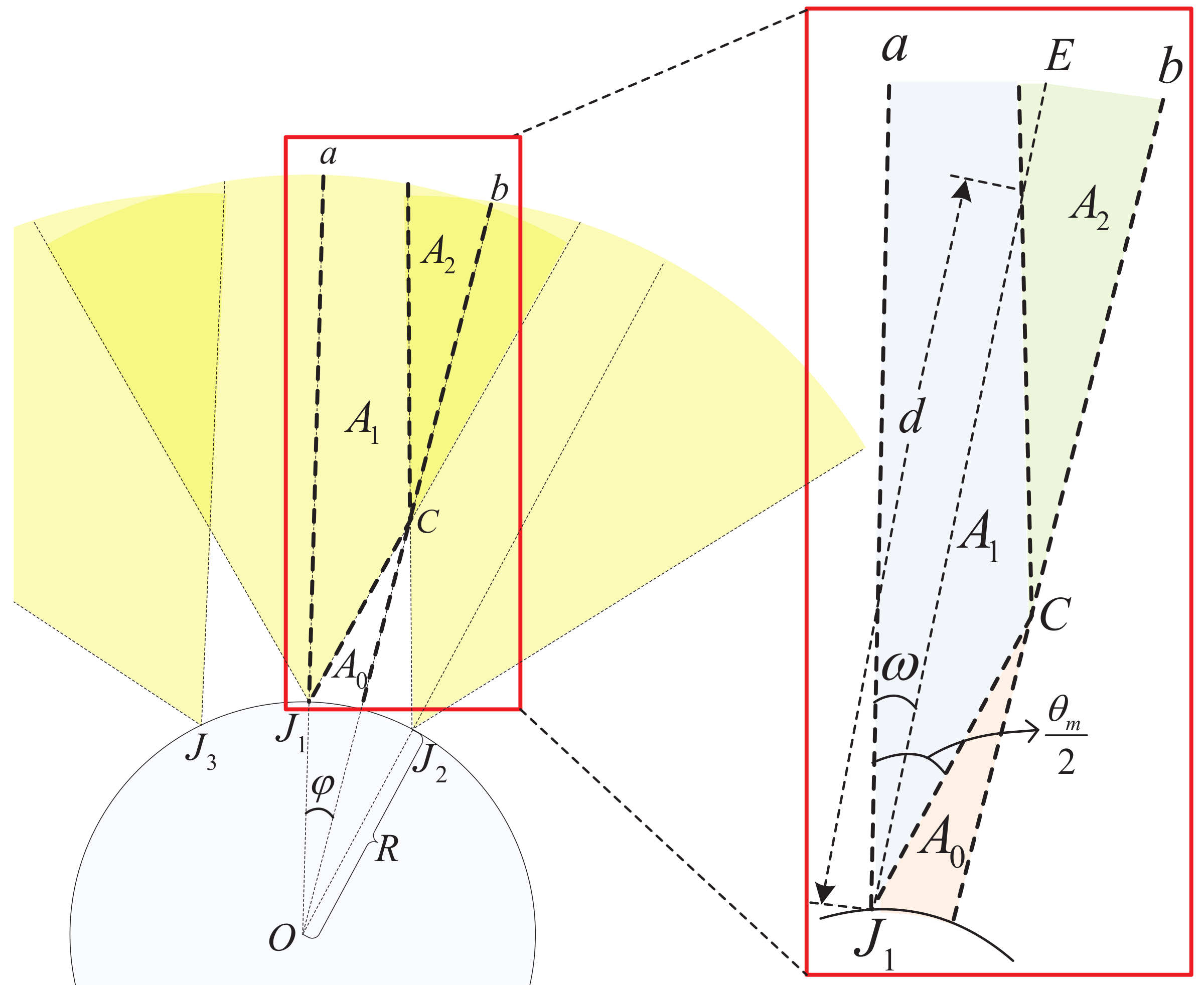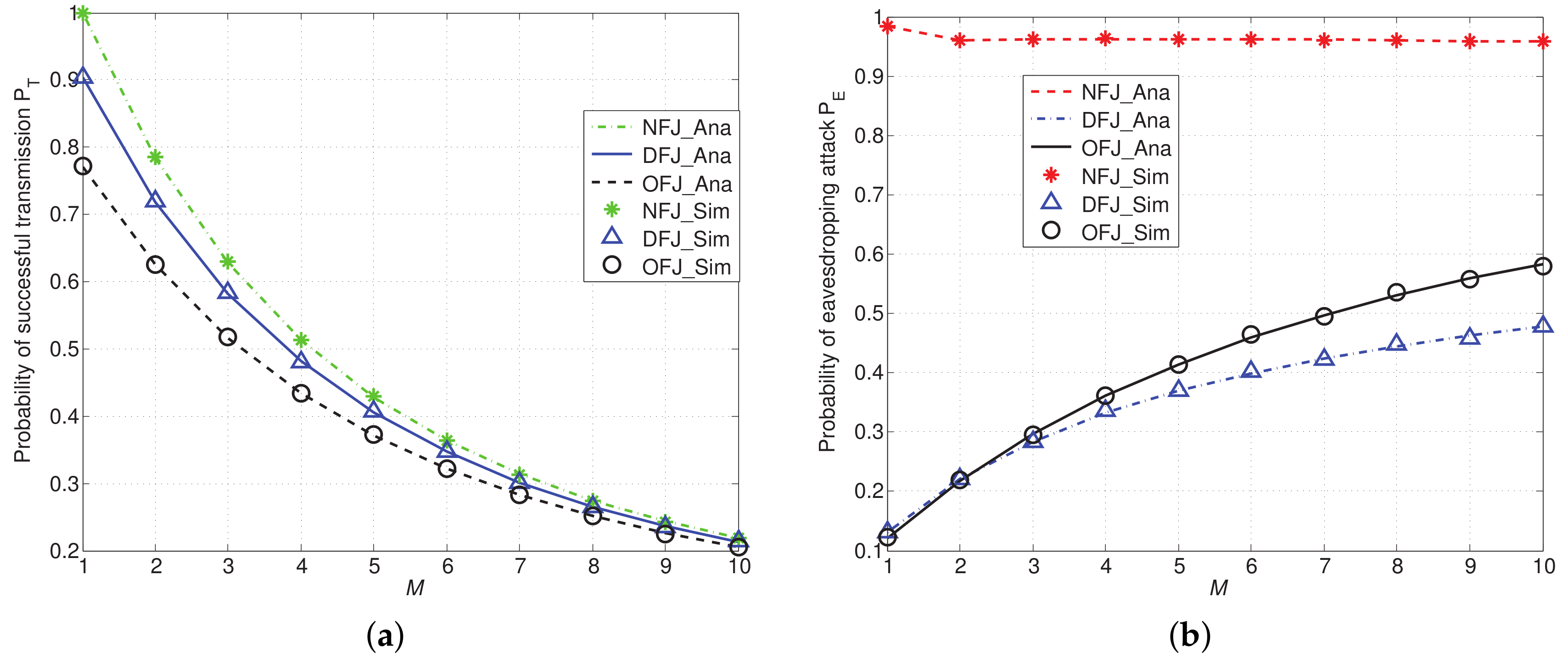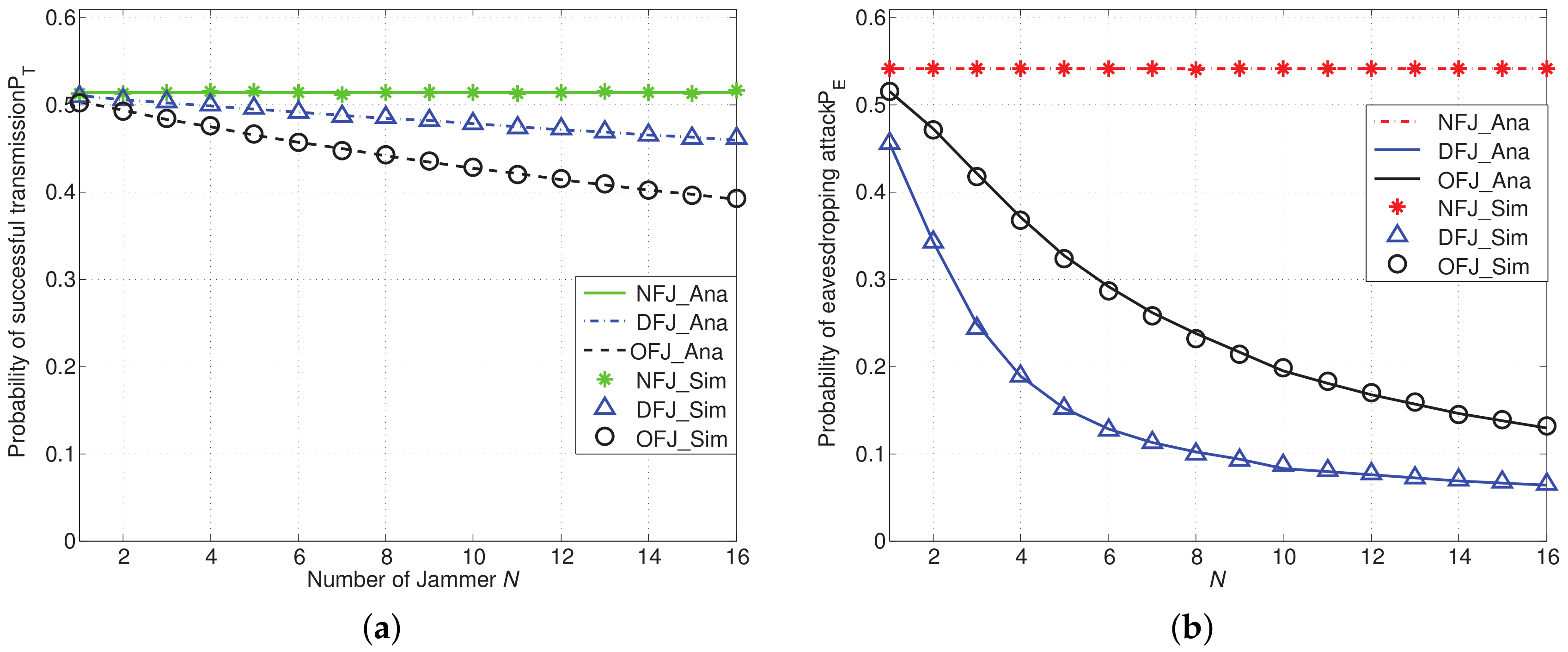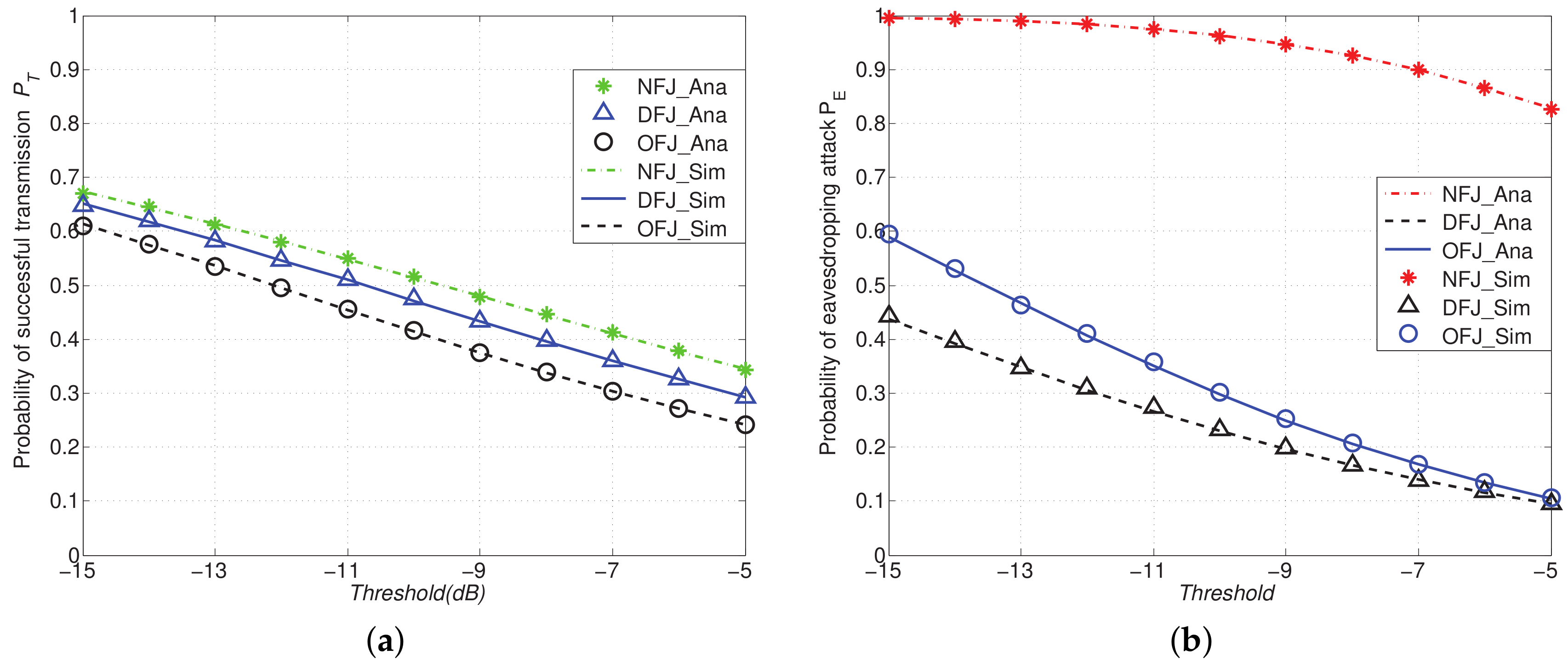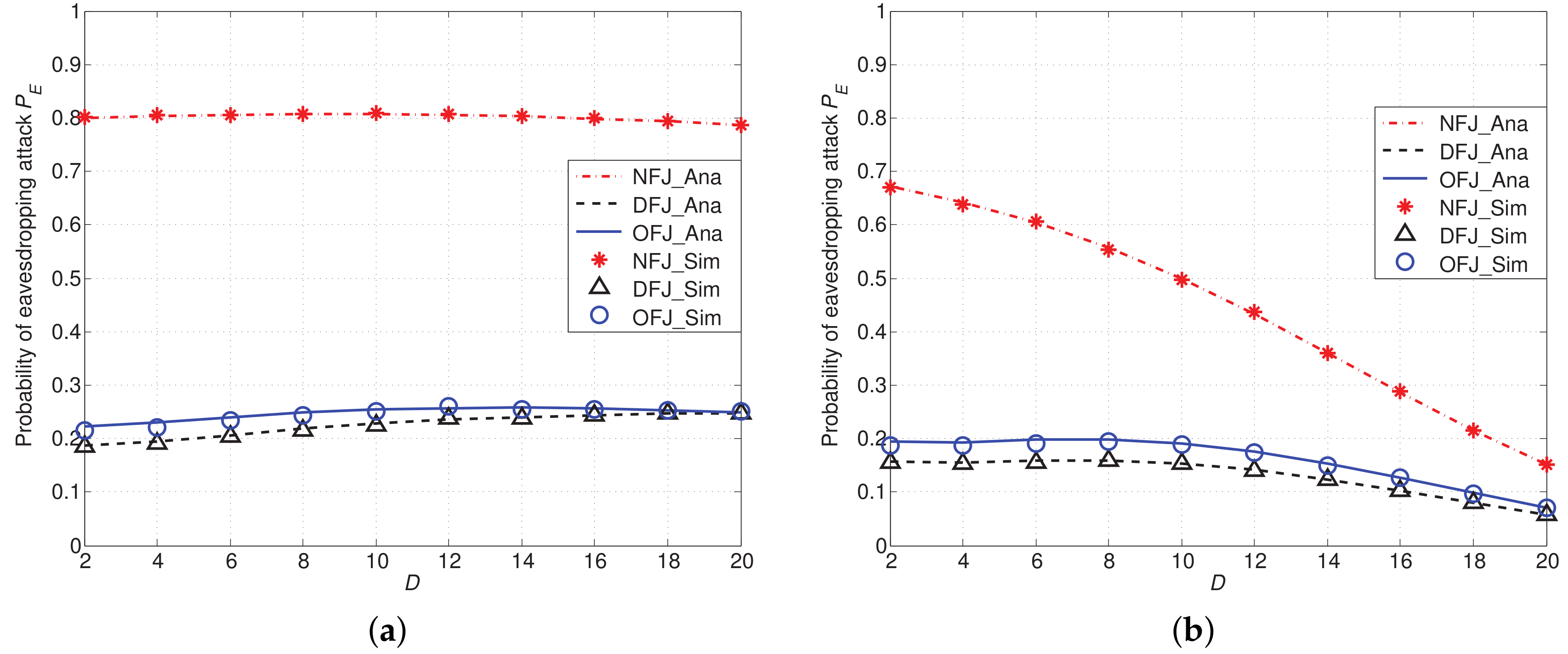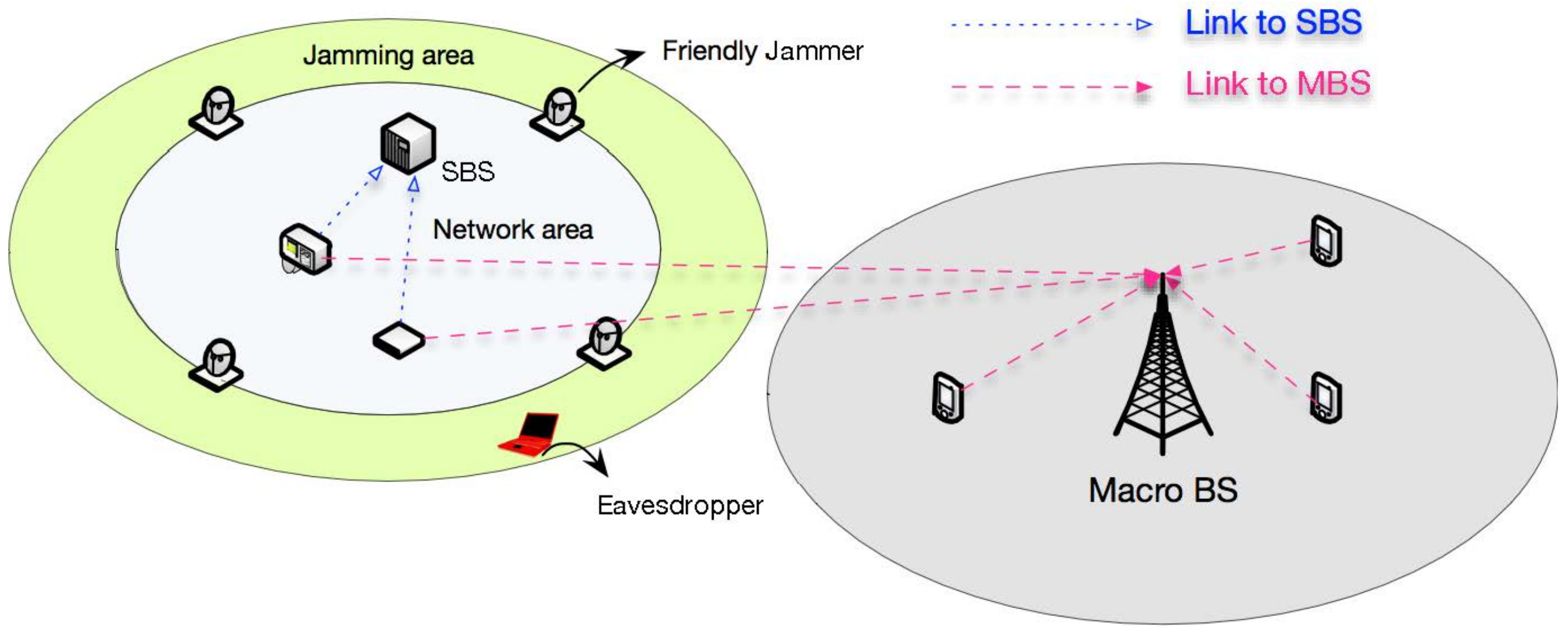1. Introduction
Crowdsensing is a technique leveraging the crowd power to accomplish sensing tasks collaboratively at a low cost. The participants in crowdsensing networks sense the information and upload the sensed data to crowdsensing platforms voluntarily. As a result, the quality of sensing tasks heavily relies on whether the number of participants is sufficient. However, due to the consumption on time, battery and data, recruiting the participants in crowdsensing networks is difficult, although some incentive mechanisms were proposed [
1]. Therefore, to guarantee the sensing quality of accomplished tasks, mobile crowdsensing as the complement of traditional statically deployments has been extensively investigated [
2,
3].
In recent years, the combination of crowdsensing and Industrial Internet of Things (IIoT) has drawn extensive attention [
4,
5]. There are a lot of benefits in introducing crowdsensing to IIoT, including: (1) providing mobile and scalable measures; (2) monitoring new areas without installing additional dedicated devices; (3) integrating human wisdom into machine intelligence straight forwardly; (4) sharing information and making decision among the whole industrial community [
4]. The performance of personal monitoring, process monitoring and product quality checking in IIoT will be improved with the help of crowdsensing [
5].
With the proliferation of wireless sensor devices, the security of transmitting data in such IIoT based crowdsensing networks deserves much attention, especially for the confidential data related with commercial interest and privacy concern. To protect the security of crowdsensing networks, some security encryption schemes were proposed, such as privacy-preserving participant selection scheme [
6] and reputation management schemes [
7]. Moreover, some encryption schemes for IIoT were presented in [
8]. The encryption schemes are feasible for devices with sufficient computing capability and power, such as smart phones or tablet computers. However, the encryption schemes may not be suitable for power-constraint sensor devices in crowdsensing networks (e.g., pulse-sensor-embedded wrists) and machinery in factories, since these schemes often require conducting compute-intensive tasks, consequently consuming a lot of power.
Different from the security encryption schemes, friendly-jamming schemes have been recognized as a promising approach to enhance the network security without bringing extra computing tasks [
9,
10,
11,
12,
13]. The main idea of friendly-jamming schemes is introducing some friendly jammers to wireless networks, where these friendly jammers can generate a jamming signal to increase the noise level at the eavesdroppers, so that they cannot successfully wiretap the legitimate communications [
14,
15,
16]. Using friendly-jamming schemes to decrease the possibility of eavesdropping attacks has received extensive attention [
17,
18]. The benefits of friendly jamming schemes is that there is no requirement for strong-computing capability of nodes, and no necessity for centralizing security schemes [
19]. Therefore, friendly-jamming schemes can be applied in crowdsensing networks with power-constraint devices.
To mitigate the eavesdropping attack of crowdsensing networks, we propose a novel friendly jamming scheme in this paper. In this scheme, we place multiple jammers at a circular boundary around the protected communication area. Being implied by previous studies [
20,
21], we also consider equipping directional antennas at jammers. We name such jamming scheme with directional antennas as DFJ. Moreover, we also consider equipping omnidirectional antennas at jammers. We name such a jamming scheme with omnidirectional antennas as OFJ. For comparison purposes, we also consider the case without jammers (named as NFJ).
The main contributions of this paper are summarized as follows.
We propose friendly jamming schemes (DFJ and OFJ) to protect confidential communications from eavesdropping attacks.
We establish a theoretical model to analyze the probability of eavesdropping attacks and the probability of successful transmission to evaluate the effectiveness of our proposed scheme.
We conduct extensive simulations to verify the accuracy of our theoretic model. The results also show that using jammers in crowdsensing networks can effectively reduce the eavesdropping risk while having no significant influence on legitimate communications.
Our proposed schemes have many more merits than other existing anti-eavesdropping schemes. Firstly, our schemes are less resource-intensive (i.e., no extensive computing resource needed) and it does not require any modifications on existing network infrastructure. Secondly, our schemes are quite general since the circular area with jammers can essentially circumscribe any buildings due to the feature that every simple polygon (i.e., the shape of a building) always has a circumscribed circle [
22]. As a result, the effective jamming to eavesdroppers can be achieved. Moreover, our schemes can offer a larger effective protection area compared with other friendly jamming schemes like placing jammers at polygons [
14] or other shapes [
23] due to the largest coverage area of a circle.
3. Impacts of Jamming Schemes on Legitimate Transmission
In this section, we investigate the impacts of different schemes on the legitimate communications. In particular, we consider the probability of successful transmission as a metric to evaluate the transmission quality of legitimate communications. The probability of successful transmission is defined as follows,
Definition 1. The probability of successful transmission is the expectation of the probability that a reference transmitter can successfully transmit with the legitimate receiver according to the distance between the receiver and the reference transmitter.
To guarantee the successful transmission of legitimate communication, the signal-to-interference- noise-ratio (SINR) at the legitimate receiver, denoted by
, must be no less than a threshold
T. In particular, when we consider the communication between a reference transmitter
and the receiver with distance
,
can be expressed as
where
is the transmission power of transmitters,
and
are the antenna gains of the reference transmitter and the receiver, respectively (where we have
since that the transmitters and receivers are equipped with omni-directional antennas),
is the cumulative interference from legitimate users (where
is the distance between the
ith transmitter and the receiver),
is the cumulative interference from
N jammers to the receiver (where
is the transmission power of the jammers and
is the antenna gain of the jammers), and
is the noise power.
Thus, we have the probability of successful transmission, denoted by
, as follows,
where
is the probability density function of the distance between the reference transmitter and the receiver
.
Then, we investigate the probability of successful transmission according to the three jammer strategies: NFJ, OFJ, and DFJ schemes.
3.1. Impact of NFJ Scheme
In NFJ scheme, there is no friendly jammer at the boundary of the communication area. Therefore, the cumulative interference from friendly jammers
. Then we have
in the NFJ scheme as in the following theorem.
Theorem 1. In the NFJ scheme, the probability of successful transmission iswhere , and M is the expectation of the number of legitimate transmitters in the communication area. Proof. Let the distance between the receiver and a transmitter be
r. Since the receiver is located at the center of the circular area and each transmitter follows uniformly i.i.d., the probability density function of
r is as follows,
After combining Equations (
5) and (
2), we have
as follows,
where
.
Since
h is a random variable following an exponential distribution with mean 1,
in Equation (
6) can be expressed as
Next, we calculate
. If we denote the expected number of legitimate transmitters by
M, we can derive the expression of
as follows,
where
is derived from the assumption that Rayleigh fading factor of each channel follows exponentially i.i.d., and
can be derived from the property of moment generating function of exponential variable.
Substituting Equation (
8) into the corresponding part of Equation (
7), we have
After plugging Equation (
9) into Equation (
6), we can obtain
in Theorem 1. ☐
3.2. Impact of OFJ Scheme
In the OFJ scheme, the friendly jammers placed at the boundary of communication area are equipped with omni-directional antennas, i.e., the antenna gain of jammers is
. Therefore,
in Equation (
3) can be expressed as
. Then we give
in the OFJ scheme by the following theorem.
Theorem 2. In the OFJ Scheme, the probability of successful transmission is Proof. Similar to the proof of Theorem 1, the probability of successful transmission
in the OFJ scheme can be expressed as follows,
where
can be derived as follows,
where
is given by Equation (
8), and
can be calculated by
Substituting Equations (
8) and (
13) into the corresponding parts of Equation (
12), we have
By plugging Equation (
14) into Equation (
11), we can obtain
of OFJ scheme in Theorem 2. ☐
3.3. Impact of DFJ Scheme
In DFJ scheme, the jammers placed at the boundary are equipped with directional antennas. In particular, we can find that the receiver can be only affected by the side lobe of directional antennas, as shown in
Figure 2. Therefore, we have
=
. Thus,
in Equation (
3) can be expressed as
. Then, we obtain
in the DFJ scheme by the following theorem.
Theorem 3. In the DFJ scheme, the probability of successful transmission is Proof. Similar to the proof of Theorems 1 and 2,
in DFJ can be expressed as
where
is given by Equation (
8), and
can be calculated by
After plugging Equations (
8) and (
17) into Equation (
16), we can obtain
of DFJ scheme in Theorem 3. ☐
4. Analysis on Probability of Eavesdropping Attacks
In this section, we analyze the influence of friendly jammers on the probability of an eavesdropping attack of this network. In particular, we use the probability of an eavesdropping attack as the metric to evaluate the possibility of being eavesdropped on in this network. We assume that if the eavesdropper can wiretap any of the transmitters, this network can be seen as being attacked. Based on this assumption, we give the definition of the probability of eavesdropping attack as follows.
Definition 2. The probability of an eavesdropping attack is the probability that the eavesdropper can wiretap any of the transmitters.
Before we analyze the probability of an eavesdropping attack, we first analyze the probability that a certain transmitter can be wiretapped by the eavesdropper, denoted by
. If the eavesdropper can wiretap a transmitter
with distance
, the SINR at the eavesdropper, denoted by
, has to be no less than a threshold
. Thus,
can be expressed as follows,
where
is the antenna gain of the eavesdropper (we have
since the eavesdropper is equipped by an omni-directional antenna),
is the cumulative interference from transmitters to the eavesdropper (where
is the distance between the
ith transmitter and the eavesdropper),
is the cumulative interference from the jammers to the eavesdropper, which will be elaborated later according to different jammer schemes, and
is the probability density function of
.
Next, based on the analysis of
, we give the probability of eavesdropping attack, denoted by
, as follows,
The impact of friendly jammers on the eavesdropping attacks will then be investigated. In particular, we will derive the probability of an eavesdropping attack of an eavesdropper in the NFJ scheme, OFJ scheme and DFJ scheme as follows, respectively.
4.1. Impact of NFJ Scheme
Firstly we consider the NFJ scheme in which there is no friendly jammer on the boundary of communication area. In this case, the interference from friendly jammers to eavesdropper , then we have the following theorem:
Theorem 4. In the NFJ scheme, the probability of eavesdropping attack iswhere , and Proof. We denote the distance between the eavesdropper and a transmitter by
l. The probability density function of
l can be expressed as follows [
26],
Then
can be expressed as
where
.
Since
is a random variable following an exponential distribution with mean 1,
can be expressed as
Following the similar approach in deriving Equation (
8), the expression of
can be derived by the following equation,
If we set
, Equation (
24) can be expressed as
After plugging Equation (
25) into the Equation (
23), and substituting the new expression of Equation (
23) into Equation (
22), we obtain the result of
as follows,
Substituting
in Equation (
26) into Equation (
19), we derive the probability of eavesdropping attack
of the NFJ scheme as given in Theorem 4. ☐
4.2. Impact of OFJ Scheme
Then we investigate the OFJ scheme, where friendly jammers are equipped with omni-directional antennas. In order to derive , we need to calculate the interference from jammers to eavesdropper first.
Figure 3 shows the geometrical relationships of the friendly jammers and the eavesdropper. Without loss of generality, we label the jammer which is nearest to the eavesdropper as
and the jammer
is at the left-hand-side of the eavesdropper. Then we label
(where
as
mth nearest jammer at the right-hand-side of jammer
separately. Similarly, we label
(where
as the
nth nearest jammer at the left-hand-side of jammer
separately.
From the observation point
O,
is the relative degree between neighbour jammers and
is the degree between jammer
and eavesdropper
E. Since the number of jammers is
N, we have
. Due to the fact that the eavesdropper is randomly located outside of the protected communication area, we have the probability density function of variable
,
Then we can calculate the cumulative interference of the jammers to the eavesdropper based on their geometrical relationships, which is given by the following lemma.
Lemma 1. When the friendly jammers are equipped with omni-directional antennas, the cumulative interference from the jammers to the eavesdropper iswhere . With the interference from the jammers to the eavesdropper , we obtain the probability of eavesdropping attack as the following theorem.
Theorem 5. In the OFJ scheme, the probability of an eavesdropping attack of an eavesdropper is:whereandin which and . Proof. Following the similar approach to the proof of Theorem 4, we can get the probability that a certain transmitter can be tapped denoted by
as follows,
where
.
Since
is a random variable following an exponential distribution with mean 1,
can be expressed as
where
given by Equation (
24).
Then we calculate
. For simplicity, we denote
,
. With the expression of
given in Lemma 1, we can obtain
given by the following equation,
where
is derived from the independence between an eavesdropper’s location and the distribution of fading channel,
follows from the property of moment generating function of exponential variable,
is derived with the probability density function of
as given in Equation (
27).
After plugging Equation (
32) into Equation (
31), and substituting the new expression of Equation (
31) into Equation (
30), we obtain the result of
as given in the following expression,
Substituting the
in Equation (
33) into Equation (
19), we obtain the result of
given in Theorem 5. ☐
4.3. Impact of DFJ Scheme
In order to derive the probability of an eavesdropping attack in the DJF scheme, we need to evaluate the interference from the friendly jammers equipped with directional antenna to the eavesdropper.
However, when the jammers are deployed densely or the distance between the eavesdropper and the commmunication area
D is large, there may be more than one jammer that interferes with the eavesdropper via their main lobes simultaneously (as shown in
Figure 4). Therefore, we first investigate the number of friendly jammers which interfere with the eavesdropper via main lobes.
In
Figure 4, we show the main lobes of 3 jammers. Due to the fact that the eavesdropper is nearest to the jammer
, the eavesdropper locates in the area between line
a and line
b, where line
a is the extended line of
and line
b is the perpendicular bisector of segment
.
The term of
in
Figure 4 is the degree between line
a and
. When
, the eavesdropper locates in area
, there is no jammers interfering it with its main lobe. When
, the area that the eavesdropper locates depends on the distance
D. When
, the eavesdropper locates in
if
, there will be one jammer interfering with the eavesdropper via its main lobe; the eavesdropper locates in
if
, there will be two jammers interfering with the eavesdropper via their main lobes.
Similarly, we denote to be the intersection area of k jammers’ main lobe directions between line a and line b. When the eavesdropper locates in area , there will be k jammers interfering with the eavesdropper via their main lobes. We denote the number of friendly jammers (interfering the eavesdropper via their main lobes) by . When is fixed, the interference of directional jammers to eavesdroppers is shown in the following lemma.
Lemma 2. When , the interference of jammers on eavesdropper in the DFJ scheme iswhere ,, and With the interference from the jammers to the eavesdropper, we obtain the probability of eavesdropping attack as the following theorem,
Theorem 6. In DFJ scheme, the upper bound of probability of eavesdropping attack is given bywhere , , , , ,,![Sensors 18 01938 i001 Sensors 18 01938 i001]()
Proof. We present the proof of Theorem 6 in
Appendix C. ☐
5. Results
In this section, we present the simulation results of probability of successful transmission
and probability of eavesdropping attack
considering the NFJ, OFJ and DFJ schemes. The simulation results are generated via Monte Carlo simulations with 50,000 runs and the parameters are given in
Table 2.
In
Figure 5, we present the numerical and simulation results of probability of successful transmission
and probability of eavesdropping attack
with different schemes. From
Figure 5a, we find
decreases when the number of legitimate transmitters denoted by
M increases. Since the receiver only receives the information from the protected transmitter, the cumulative interference from legitimate transmitters to the receiver increases with
M. When we introduce friendly jammers into the network, compared with the NFJ scheme,
decreases. The performance of
with DFJ scheme is better than
with OFJ scheme. This is because the lower antenna gain of side lobe in the DFJ scheme leads to less interference to the legitimate transmission.
In
Figure 5b, the red curve represents the probability of eavesdropping attack
of the NFJ scheme. From numerical results, we find that the red line decreases very slowly, especially when
M is larger than 2. For example, when
,
of NFJ scheme is 0.9626, while
becomes 0.9619 and 0.9602 when
M becomes 6 and 8, respectively. This result lies in the fact that the eavesdropper may eavesdrop any one of the
M legitimate transmitters, rather than a specially appointed transmitter. When
M increases, the interference on the eavesdropper increases. However, the eavesdropper may tap more transmitters as the total number of transmitters is increased. In addition, the performance of
of DFJ scheme is still better than that of the OFJ scheme, because of the higher antenna gain of main lobe.
From
Figure 5a,b we find that introducing friendly jammers into the network will lead to the decrement on both
and
. However, the influence of friendly jammers on
is more obvious than the influence on
. For example, when
, compared with the NFJ scheme, the reduction of
with OFJ scheme is
(i.e.,
reduced), while the reduction of
is 0.5485 (i.e.,
reduced). When
, compared with the NFJ scheme, the reduction of
with DFJ scheme is
(i.e.,
reduced), the reduction of
is 0.5935 (i.e.,
reduced). Therefore, the DFJ scheme can reduce the probability of eavesdropping attacks more significantly while maintaining the lower impairment to the legitimate communications than the OFJ scheme. This result implies that using friendly jammers can reduce the eavesdropping attack without causing obvious damage on legitimate transmission.
Figure 6 shows the comparison of
and
in different schemes with the varied number of friendly jammers denoted by
N. In
Figure 6a, we find that both
of the DFJ scheme and that of the OFJ scheme decrease when
N increases. The decrement of
lies in the increased cumulative interference from friendly jammers. Moreover,
Figure 6b shows that
decreases rapidly when the number of friendly jammers
N increases, especially when friendly jammers are equipped with directional antennas (i.e., in DFJ scheme). This result can help to verify the effectiveness of OFJ and DFJ schemes in reducing the probability of eavesdropping attacks
.
The results as shown in
Figure 6 imply that it may not be necessary to deploy too many friendly jammers in the network. In particular, in the DFJ scheme, we can significantly reduce the probability of eavesdropping attacks while only slightly impairing legitimate communications by introducing a few friendly jammers. For example, when
, compared with NFJ scheme, the reduction of
in DFJ scheme is
(i.e.,
reduction), while the reduction of
in the DFJ scheme is
(i.e.,
reduction).
Figure 7 shows the comparison of
and
with DFJ, OFJ schemes versus the NFJ scheme with different SINR threshold. It is shown in
Figure 7 that
decreases with the threshold
T and
decreases with the threshold
. From
Figure 7a, similarly to
Figure 5b, we find that using friendly jammers can always reduce the probability of eavesdropping attacks
compared with the NFJ scheme, and the DFJ scheme performs better than the OFJ scheme obviously.
In another set of simulations as presented in
Figure 8, we compare the probability of eavesdropping attack
of different schemes with varied distance between the eavesdropper and the network boundary
D. From
Figure 8a, we can find that
of NFJ, OFJ and DFJ schemes vary slightly when path loss factor
. It means when
, path loss effect has no obvious impact on
. This result lies in the fact that path loss has the influence on both useful signal and interference. However, when the path loss factor
increases from 3 to 4, as shown in
Figure 8b,
of three schemes decreases rapidly, especially in the NFJ scheme. This result implies that the path loss has a more obvious influence on useful signal than that on interference. From
Figure 8, we also find that using friendly jammers can reduce the probability of eavesdropping attacks
compared with the NFJ scheme.
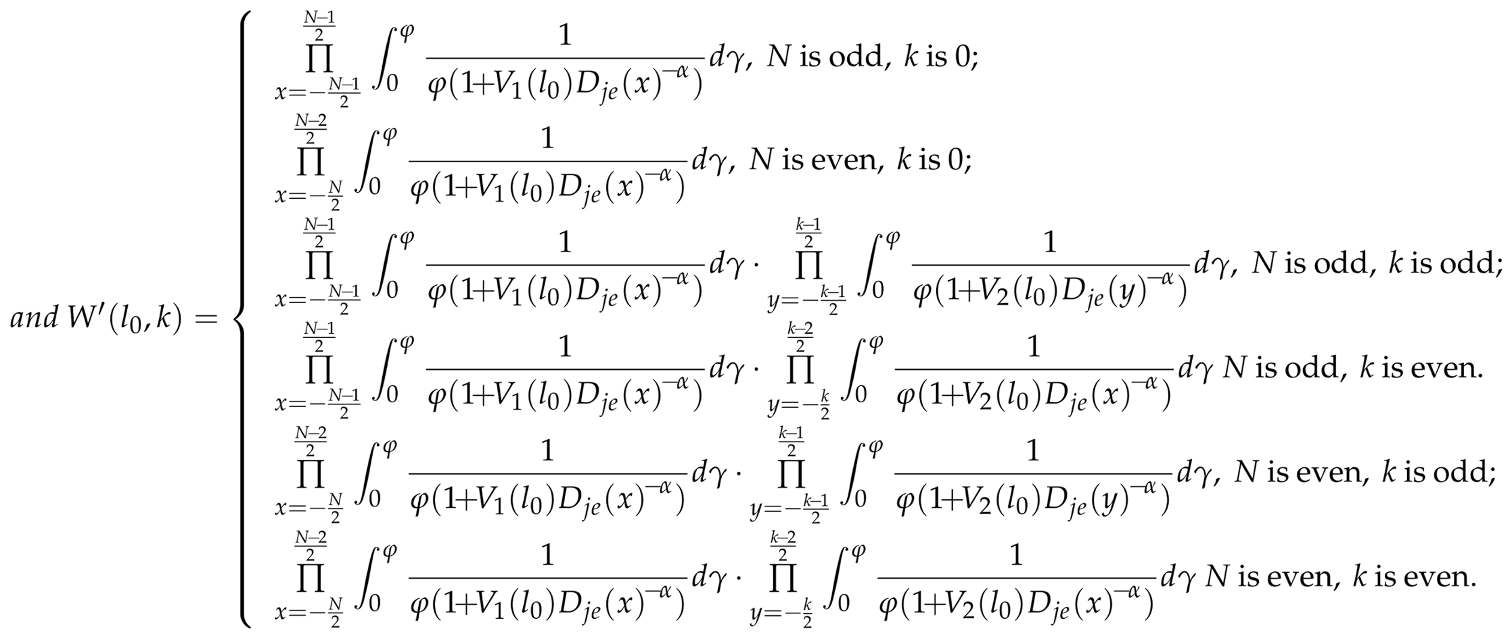
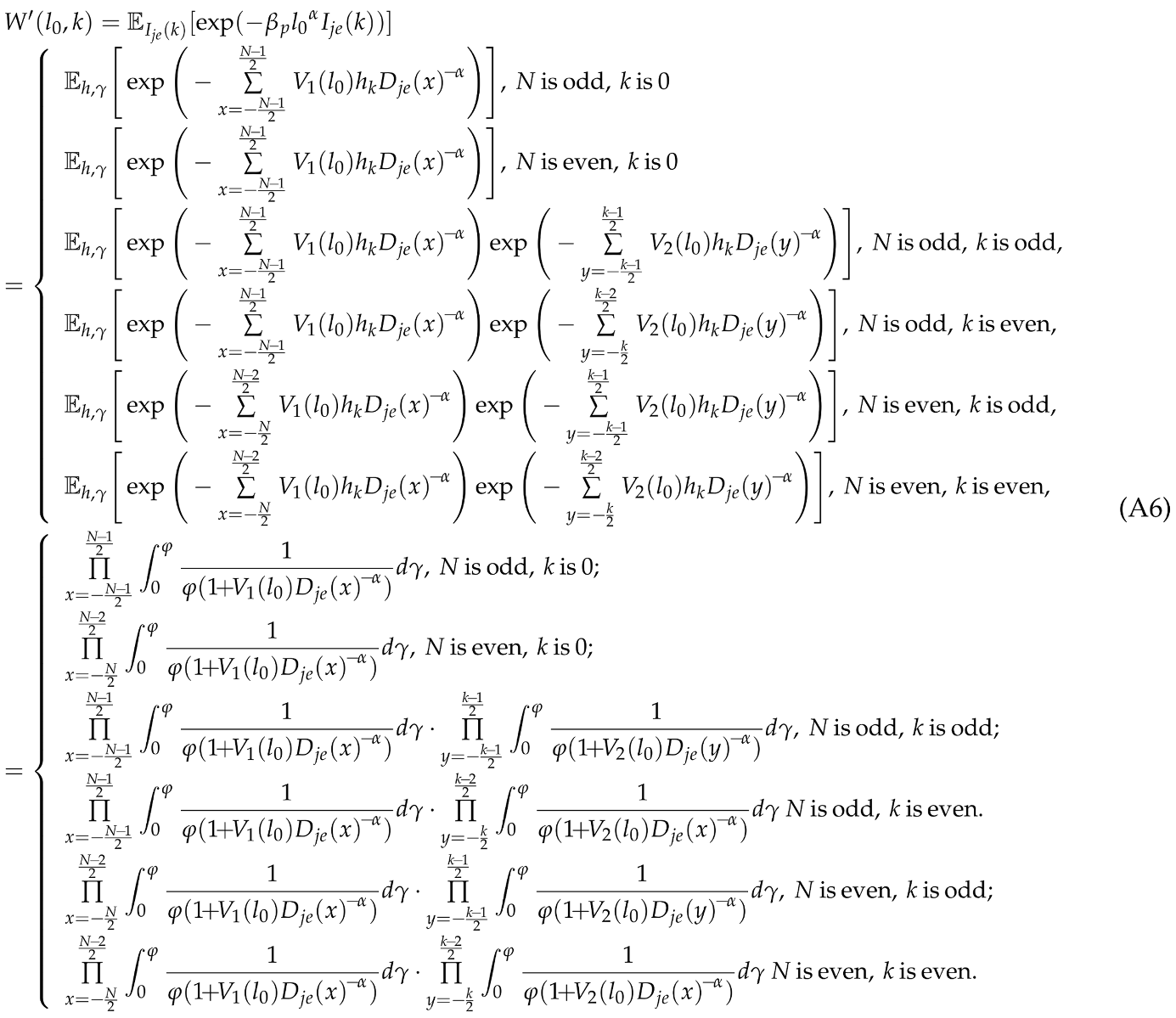 where , and .
where , and .
